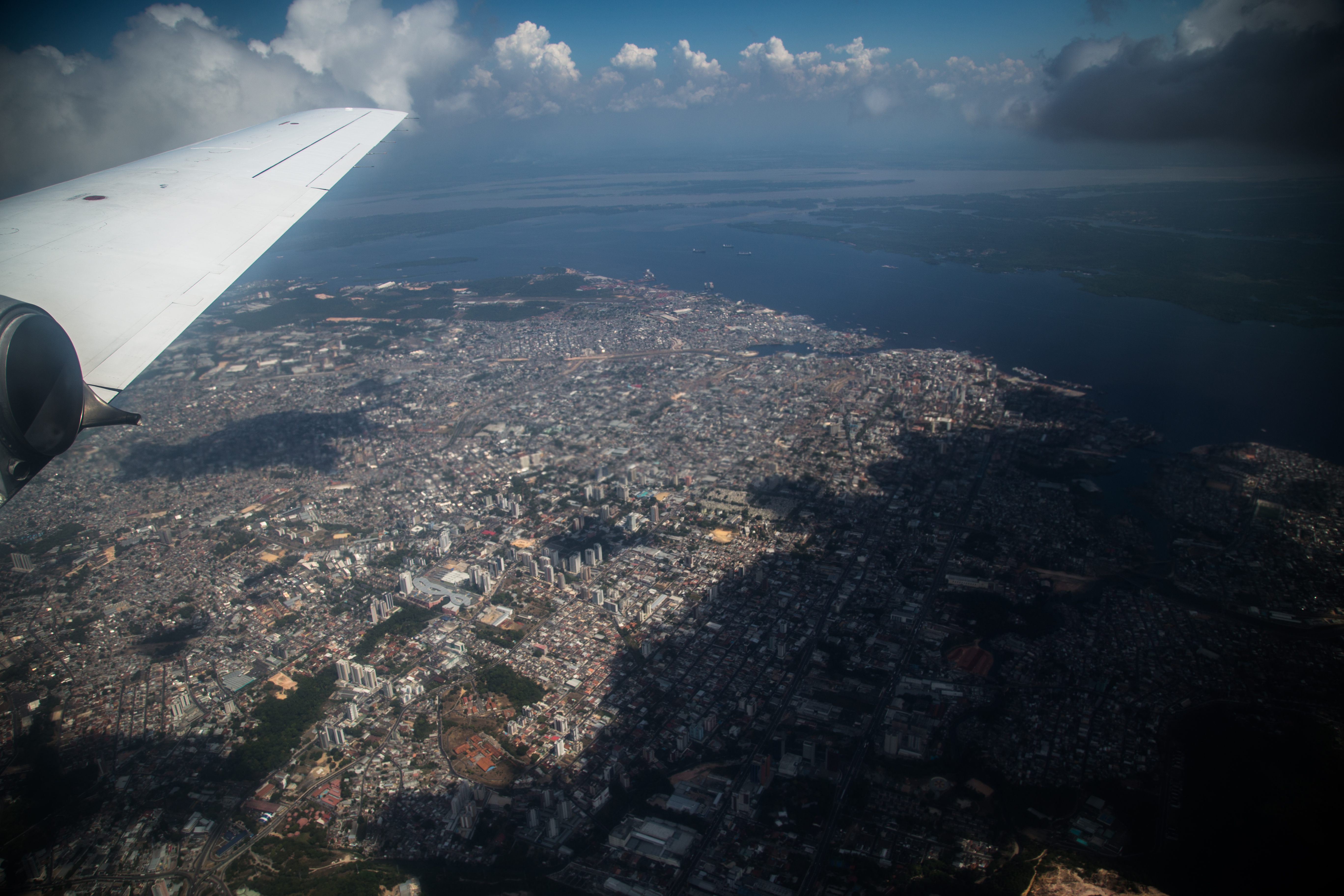Comparison is key to validating aircraft measurement data sets
Submitter
Schmid, Beat — Pacific Northwest National Laboratory
Area of Research
Aerosol Processes
Journal Reference
Mei F, J Wang, J Comstock, R Weigel, M Krämer, C Mahnke, J Shilling, J Schneider, C Schulz, C Long, M Wendisch, L Machado, B Schmid, T Krisna, M Pekour, J Hubbe, A Giez, B Weinzierl, M Zoeger, M Pöhlker, H Schlager, M Cecchini, M Andreae, S Martin, S de Sá, J Fan, J Tomlinson, S Springston, U Pöschl, P Artaxo, C Pöhlker, T Klimach, A Minikin, A Afchine, and S Borrmann. 2020. "Comparison of aircraft measurements during GoAmazon2014/5 and ACRIDICON-CHUVA." Atmospheric Measurement Techniques, 13(2), 10.5194/amt-13-661-2020.
Science

Figure 1. Image courtesy of the U.S. Department of Energy Atmospheric Radiation Measurement user facility.
Comparing the data obtained from measurements from two different aircraft showed good agreement between data sets.
As more studies focus on how atmospheric properties in the Amazon basin change in space and over time, obtaining quality-controlled measurements is essential. However, the challenges of airborne operations, especially with multiple aircraft collecting data in the same area, makes direct comparison studies fundamental, but rare. A field campaign led by the Atmospheric Radiation Measurement (ARM) user facility used two different aircraft equipped with similar instruments to collect data in the same region. Researchers then compared these data and observed good agreement between the two sets of aircraft measurements for a relatively broad range of atmospheric-related variables measured in a challenging lower-troposphere environment.
Impact
This study provides other researchers with an approach to designing coordinated flights that allows them to make meaningful comparisons between the measurements of two aircraft. The comparisons and related uncertainty estimations quantify current measurement limits, which provides guidance to modelers for realistically determining input value and evaluating the variation between measurements and model output. This work quantifies the uncertainty ranges of the data collected from the different platforms, providing a foundation for evaluating further modeling and validating remote sensing.
Summary
Researchers compared in situ measurements made by well-characterized instruments installed on two research aircraft (the ARM G-1 and the German HALO) during the GoAmazon 2014/15 and ACRIDICON (Aerosol, Cloud, Precipitation, and Radiation Interactions and Dynamics of Convective Cloud Systems)-CHUVA (Cloud Processes of the Main Precipitation Systems in Brazil) campaigns. Similar instruments mounted on the G-1 and HALO collected vertical profiles of atmospheric state parameters, aerosol particles, trace gases, clouds, and atmospheric radiation properties. Researchers found that the studied measurements from the two aircraft agreed within predicted measurement uncertainties. The comparisons and related uncertainty estimations quantify current measurement limits, which provide guidance for realistically quantifying model input values and evaluating variations between measurements and model output. The comparison identified the main factors contributing to the uncertainties in measurements from two research aircraft. Three of the primary sources that contributed to the variations between the two aircraft are temporal and spatial variations, differences in the inlet characterization, and limitations of the instruments themselves.
The ARM Aerial Facility operated the G-1 aircraft.
Keep up with the Atmospheric Observer
Updates on ARM news, events, and opportunities delivered to your inbox
ARM User Profile
ARM welcomes users from all institutions and nations. A free ARM user account is needed to access ARM data.


















